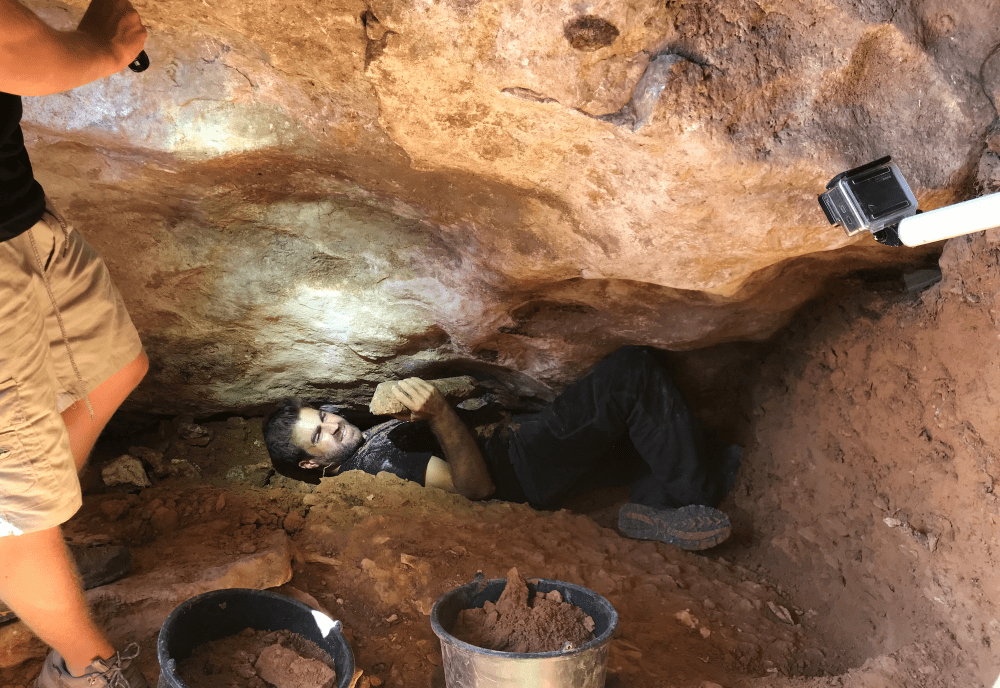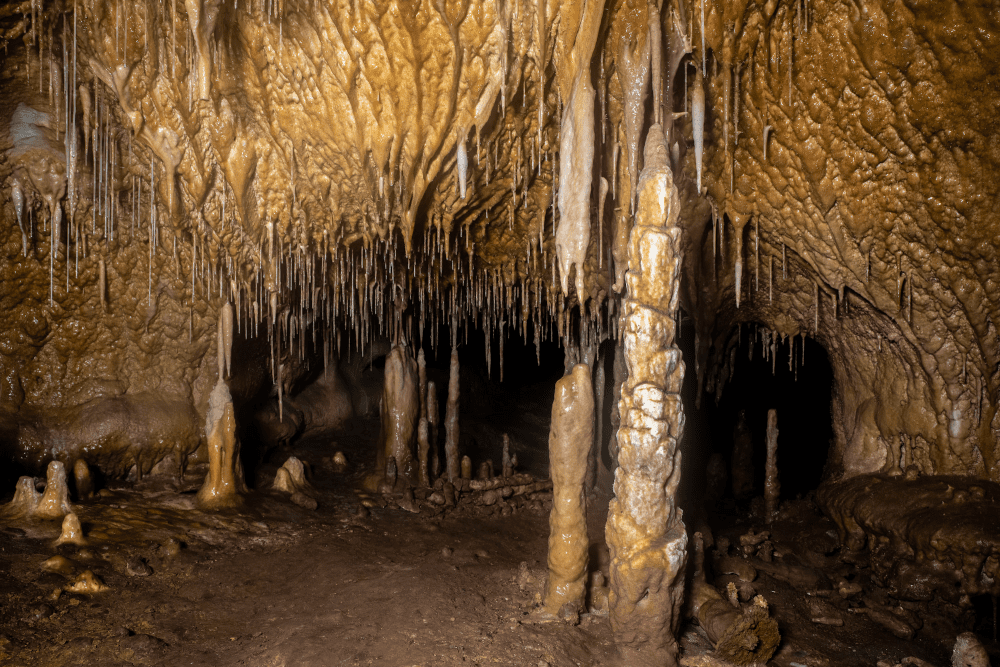It’s not often in life that scientists get the opportunity to explore a habitat frozen in time for millennia, but when researchers in 2015 began to suspect that a cavernous space was hiding within the rock of south-east Spain, they got a hell of a lot more than they’d bargained for.
It would be years before the sheer magnitude of the cave would become clear, but what researchers have discovered so far in their careful explorations into the ancient cave is that it was once home to long-extinct bears whose claw marks can still be seen among the monstrous stalactites that hang from the cave’s ceiling.
The expedition into the Cueva del Arco that sits within the Cañón de Almadenes in Cieza, Spain, is being led by researchers from the University of Murcia. Among them is Professor Ignacio Martín Lerma who was one of the first to lay eyes on the cave as he stuck his head under a rock to see what was on the other side.

Nobody said venturing into the silt-sealed prehistoric cave bear cavern would be easy. Image credit: University or Murcia
What was first anticipated to be a modest opening has proven to be a cavernous space with ceilings that stretch to over 20 meters (65 feet) above the cave floor.
“We found ourselves before a world-class discovery,” the team said in a statement. “Its rooms were enormous, some of them 20 metres high, making [them] the tallest in the region. Its stalactites were equally unrivalled, some of them 3 metres [10 feet] long and 1 centimetre [0.4 inches] wide, meaning they had grown in conditions of almost unparalleled stability thanks to the cavern’s isolation over the course of many millennia.”
One of the most remarkable findings already gleaned from the cavernous space is the evidence of cave bear claw marks along its walls. Cave bears (Ursus spelaeus) are thought to have gone extinct around 24,000 years ago and were absolute units weighing around half a ton and stretching up to 3 meters (10 feet) in length.

The cavernous space was apparently once a cozy spot for hibernating cave bears. Image credit: University of Murcia
The witness marks they left carved on the walls of this ancient cave demonstrate that they were living farther south in the peninsula than expected. They didn’t actually live in caves but many of their fossils have been found in them, probably as a result of the animal dying during hibernation, something they evolved to be good at by developing massive sinuses.
However, it’s also possible the plant-based behemoths were bested by those same massive sinuses as they made eating meat almost impossible due to the positioning of their teeth. As Earth froze and vegetation died out, cave bears may have been less able to adapt to the cold compared to their meat-eating Ursus arctos cousins who are still kicking about on Earth to this day.
With discoveries uncovered in the cave already having exceeded the researchers’ expectations, there’s much excitement around what’s yet to come, but with such a rare and untouched natural treasure in their hands, the team have urged they will venture forth with extreme caution.
[H/T: Guardian]
Source Link: Cave Sealed For Thousands Of Years Reveals Claw Marks Of Prehistoric Bears